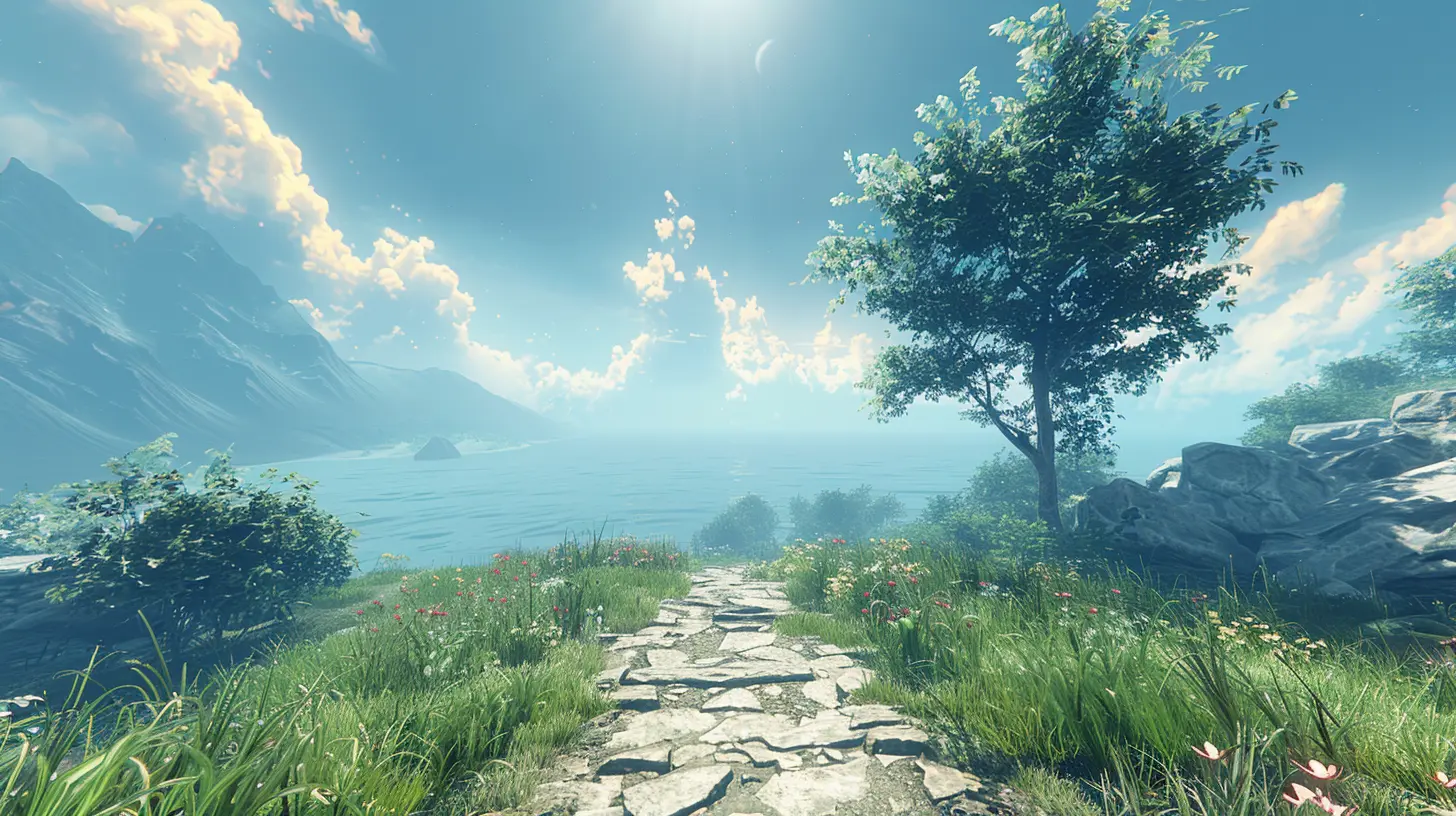The Importance of Game Feel and Feedback in Unity
11 August 2025
So, you’ve spent months building your game in Unity. The mechanics are rock-solid, the graphics are polished, and everything technically works. But… something feels off. Players aren’t engaging. Your game feels lifeless. What gives?
Let me tell you a secret that separates a great game from a just “okay” one: game feel and feedback.
Yep, that’s right. No matter how groundbreaking your concept or gameplay loop is, if your game doesn’t feel satisfying to play, it won't stick. In this guide, we’re diving deep into why game feel and feedback are crucial and how you can make your Unity game not just function — but sing.
What Is Game Feel?
Let’s start with the basics.Game feel — also called “juice” in some circles — is that intangible, magical quality that makes a game a joy to play. It’s how mechanics, visuals, sound, and interactions come together to create a sense of weight, motion, and impact.
Imagine swinging a sword in a game. Now, imagine the sword has:
- A satisfying swoosh sound
- A screen shake when it hits
- A flash or particle burst on contact
- Maybe a little hit pause to sell that impact
That’s game feel. It's not about adding fluff — it’s about giving player actions meaning through rich sensory feedback.
Why Game Feel Matters More Than You Think
First Impressions Are Everything
You don’t get a second chance to impress someone trying your game for the first time. If your controls feel floaty or your actions lack oomph, players will feel disconnected.Great game feel instantly communicates that this is a well-crafted, thought-out experience. It tells the player: “Hey, your input matters here.”
It Enhances Player Immersion
When you nail the feel, the player forgets they’re holding a keyboard or gamepad. They’re inside your world. The controls become an extension of their body.Whether it’s gliding through a stylized world like in Journey, or feeling every shot in DOOM Eternal, good game feel bridges the gap between player and game.
It Can Turn a Simple Mechanic into a Blast
Let’s be honest: most mechanics are reused. Jumping, shooting, moving — we’ve seen them a million times. What sets games apart isn’t what you do, but how it feels when you do it.Take a basic jump. In Celeste, it’s not just a jump. There's a juicy lift, subtle squash and stretch, sound cues, and controller rumble. That turns a mundane move into a tactile delight.
Feedback: The Unsung Hero
Okay, so we’ve hyped up game feel. But what brings that feel to life? That’s right — feedback.Feedback is your game’s way of constantly talking to the player: “Hey, you pressed something — here’s what happened.”
And it's everywhere:
- Visual effects — flashes, explosions, trails
- Audio cues — gunshots, footsteps, UI clicks
- Tactile feedback — controller rumble
- Gameplay responses — hit pause, knockback, slow-mo
The better the feedback, the more connected the player feels to what’s happening.
Unity: Your Game Feel Playground
There’s good news if you’re using Unity. Unity loves game feel. It gives you all the tools to create tight, juicy, responsive gameplay — but it’s up to you to use them.Here’s how you can bring your game feel to the next level in Unity.
1. Get Your Inputs Feeling Snappy
First things first: responsive controls are the foundation. If there’s input lag or delay, nothing else will matter.In Unity:
- Use `Input.GetKeyDown()` or the new Input System for better responsiveness.
- Avoid physics-based movement unless you need it. Directly move objects with `Transform` or `CharacterController` for tighter results.
- Watch out for inconsistent frame rates. Use `Time.deltaTime` to keep movement smooth.
Play test constantly. If it doesn’t feel right, tweak, tweak, and tweak again.
2. Polish Movement With Tweening and Easing
Ever heard of tweening? It’s a fancy word for smoothing out movement animations, and Unity’s got popular tools like DOTween to help.Instead of instantly snapping objects around, use easing functions to:
- Slide menus into place
- Add bounce to UI buttons
- Smooth character animations
This stuff might sound small, but it adds a ton of polish.
3. Use Hit Pause Like a Pro
Hit pause (also known as freeze-frame or time stop) is when the game briefly freezes on impact to emphasize an action. It sounds minor, but it massively boosts feedback.In Unity, you can achieve a hit pause by:
csharp
Time.timeScale = 0f;
yield return new WaitForSecondsRealtime(0.05f);
Time.timeScale = 1f;
Just that tiny moment gives the player time to process, “Whoa — I really hit that thing.”
4. Add Screen Shake for Impact
Nothing screams power like a good old screen shake. Got an explosion? A boss stomp? Punch of doom?Add screen shake. Trust me.
You can code it, or use Unity’s Cinemachine Impulse for easy implementation. Just don’t overdo it — too much shake and your game becomes a nausea simulator.
5. Bring in Particles and VFX
Visual effects are eye candy — and also critical feedback tools.Examples:
- Sparking trails on bullets
- Dust clouds when jumping or landing
- Glows on interactive objects
- Flickers during low health
Unity’s Particle System is your best friend here. Create simple effects that reinforce actions and events.
And if you’re feeling fancy, check out Shader Graph to build responsive visual flair.
6. The Power of Sound
Let’s not forget audio. Sound is half the game feel experience — maybe more.In Unity:
- Use AudioSource to attach sounds to objects
- Layer FX sounds for variety (e.g., footsteps on different surfaces)
- Randomize pitch and volume slightly to avoid repetition
And don’t forget: silence is also a tool. A brief pause before a massive explosion can add drama and tension.
7. UI and UX Feedback
Yes, even your menus and UI deserve feedback love.Make buttons:
- Animate slightly on press
- Play click sounds
- Change color on hover
Give players visual confirmation when they select options, pick up items, or complete objectives. Even subtle cues make the experience smoother and more satisfying.
8. Player-Centric Design Philosophy
All of this boils down to one thing: always think from the player’s perspective.Ask yourself:
- Does this action feel rewarding?
- Is it clear what just happened?
- Are the controls responsive and intuitive?
When you design around player experience, adding feedback becomes second nature.
Game Feel Case Studies in Unity
Let’s look at some Unity games that nailed game feel.1. Hollow Knight
Built in Unity, Hollow Knight is a masterclass in precision platforming and combat feel. Sword swings have crisp sound design, subtle screen shakes, and beautiful particles.Even taking damage feels satisfying thanks to hit pause and clever animations.
2. Cuphead
Though its visuals steal the spotlight, the real hero here is the feedback. Every bullet, parry, and explosion pops with instant response. The game is hard, sure — but it never feels unfair. That’s because of feedback clarity.3. Dead Cells
Smooth, snappy inputs. Chunky, weighty hits. Satisfying movement. Dead Cells leverages audio, lighting, and screen effects to make every dodge and attack feel tight and responsive.Tips to Test and Improve Game Feel
1. Playtest Early and OftenDon’t wait until the end. Get feedback while things are still flexible.
2. Record Gameplay
Watch clips in slow-mo. Look for clunky transitions or missing feedback.
3. Add One Thing at a Time
Tweak, test, then tweak again. Don’t dump a dozen effects at once.
4. Study Games You Love
Pause gameplay, go frame-by-frame, and see how your favorite games do it.
5. Build a Feedback Toolkit in Unity
Create reusable scripts for things like hit pause, shake, sound triggers, etc.
Common Mistakes to Avoid
- Too much feedbackIf everything is exploding, nothing stands out. Be selective.
- No feedback at all
Don’t leave actions “dry.” Even a simple flash or sound can work wonders.
- Ignoring audio
Sound is cheap to implement and massively effective. Use it!
- Over-reliance on realism
Sometimes, realism is the enemy of fun. Exaggeration often feels better.
Wrapping It Up
If there’s one piece of advice that sticks, let it be this: Your game’s feel is just as important as its function, if not more.Unity gives you all the tools. Your job is to bring the game to life — to make it feel good in the player’s hands. That’s what turns a game from forgettable to unforgettable.
So go out there, tweak that jump arc, juice up that explosion, and add that punchy sound. Your players will thank you.
all images in this post were generated using AI tools
Category:
Unity GamesAuthor:

Tayla Warner
Discussion
rate this article
1 comments
Maris Green
Game feel is everything! Excited to see how Unity enhances it!
August 20, 2025 at 2:58 AM

Tayla Warner
Absolutely! Game feel is crucial for player immersion, and Unity's tools can significantly enhance that experience. Exciting times ahead!


